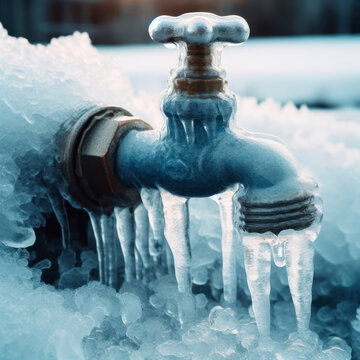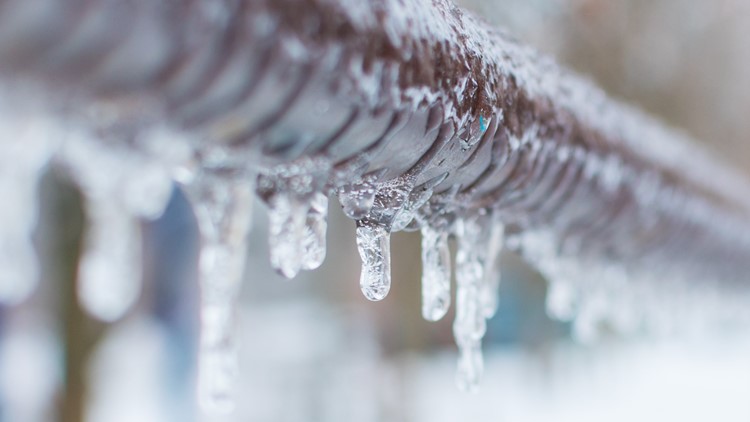Tips to Protect Your Plumbing from Freezing: Essential Tips
Tips to Protect Your Plumbing from Freezing: Essential Tips
Blog Article
They are making several great pointers on the subject of How to prepare your home plumbing for winter weather as a whole in this great article in the next paragraphs.

Winter can ruin your pipes, especially by freezing pipelines. Below's how to avoid it from taking place and what to do if it does.
Intro
As temperature levels drop, the risk of frozen pipes rises, possibly leading to expensive repair work and water damages. Recognizing exactly how to prevent icy pipes is essential for homeowners in cold climates.
Prevention Tips
Insulating vulnerable pipes
Wrap pipelines in insulation sleeves or utilize warm tape to shield them from freezing temperature levels. Concentrate on pipes in unheated or exterior areas of the home.
Heating techniques
Maintain indoor spaces properly warmed, particularly locations with plumbing. Open up cabinet doors to enable cozy air to distribute around pipelines under sinks.
Just how to identify icy pipelines
Seek decreased water flow from faucets, unusual smells or sounds from pipelines, and noticeable frost on exposed pipes.
Long-Term Solutions
Architectural changes
Consider rerouting pipelines away from outside wall surfaces or unheated locations. Add extra insulation to attic rooms, basements, and crawl spaces.
Upgrading insulation
Buy premium insulation for pipes, attic rooms, and walls. Proper insulation helps maintain constant temperatures and decreases the risk of icy pipelines.
Protecting Outside Plumbing
Yard hoses and outside taps
Detach and drain yard hoses prior to wintertime. Install frost-proof spigots or cover outside taps with protected caps.
Understanding Frozen Pipelines
What causes pipelines to ice up?
Pipelines ice up when revealed to temperature levels below 32 ° F (0 ° C) for expanded periods. As water inside the pipelines ices up, it broadens, putting pressure on the pipe walls and potentially triggering them to break.
Dangers and problems
Icy pipelines can bring about water supply interruptions, property damage, and pricey repair work. Burst pipes can flood homes and create extensive structural damage.
Indications of Frozen Water Lines
Identifying icy pipelines early can prevent them from breaking.
What to Do If Your Pipes Freeze
Immediate actions to take
If you think frozen pipelines, keep taps open up to ease stress as the ice melts. Use a hairdryer or towels taken in warm water to thaw pipes slowly.
Conclusion
Preventing icy pipes requires aggressive measures and fast reactions. By recognizing the reasons, signs, and preventive measures, homeowners can secure their plumbing during cold weather.
5 Ways to Prevent Frozen Pipes
Drain Outdoor Faucets and Disconnect Hoses
First, close the shut-off valve that controls the flow of water in the pipe to your outdoor faucet. Then, head outside to disconnect and drain your hose and open the outdoor faucet to allow the water to completely drain out of the line. Turn off the faucet when done. Finally, head back to the shut-off valve and drain the remaining water inside the pipe into a bucket or container. Additionally, if you have a home irrigation system, you should consider hiring an expert to clear the system of water each year.
Insulate Pipes
One of the best and most cost-effective methods for preventing frozen water pipes is to wrap your pipes with insulation. This is especially important for areas in your home that aren’t exposed to heat, such as an attic. We suggest using foam sleeves, which can typically be found at your local hardware store.
Keep Heat Running at 65
Your pipes are located inside your walls, and the temperature there is much colder than the rest of the house. To prevent your pipes from freezing, The Insurance Information Institute suggests that you keep your home heated to at least 65 degrees, even when traveling. You may want to invest in smart devices that can keep an eye on the temperature in your home while you’re away.
Leave Water Dripping
Moving water — even a small trickle — can prevent ice from forming inside your pipes. When freezing temps are imminent, start a drip of water from all faucets that serve exposed pipes. Leaving a few faucets running will also help relieve pressure inside the pipes and help prevent a rupture if the water inside freezes.
Open Cupboard Doors
Warm your kitchen and bathroom pipes by opening cupboards and vanities. You should also leave your interior doors ajar to help warm air circulate evenly throughout your home.

Do you really like reading up on 6 Ways to Prevent Frozen Pipes? Make a remark down the page. We'd be pleased to listen to your thoughts about this posting. We hope that you visit us again in the near future. Sharing is good. You won't know, you may just be doing someone a favor. Bless you for your time. Return soon.
This Post Report this page